About CERES
Research questions, who will benefit, industry participationWhy CERES
CERES investigated how climate change is affecting different European fish/shellfish species – and how Europe’s fishermen and fish farmers can adapt in the future to climate change.
We already know climate change is causing some fish/shellfish to struggle, some to do well, and others to move from their traditional environment.
For example, plaice have gone from waters 20 to 30 metres deep down to 50 metres. Changes such as this put pressure on locals whose livelihoods rely on these species.
To support European Blue Growth, CERES research reveals and explores such changes and develops tools and solutions to help businesses and communities adapt.
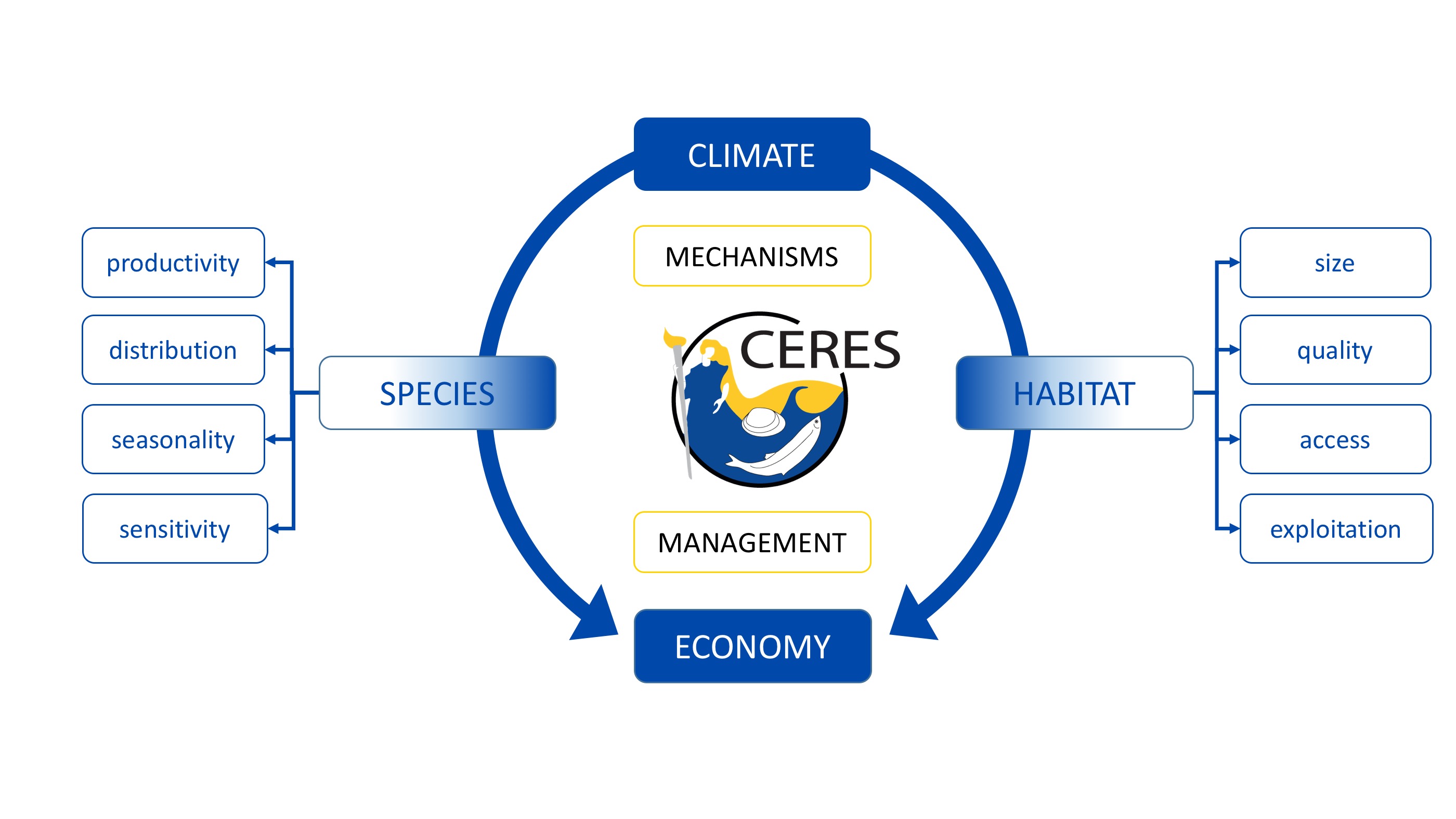
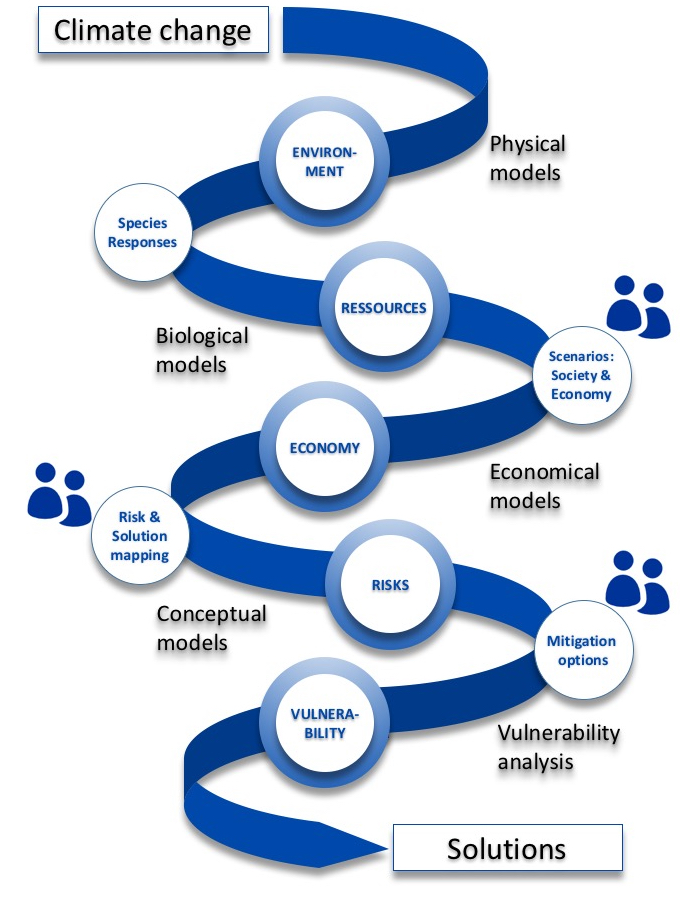
Research areas
Environment
CERES projected how future marine and inland water conditions will affect fisheries and aquaculture industries.
Resources
Biological models developed in CERES offer predictions of how target species’ physical and ecological responses may change the productivity of fish and shellfish resources.
Economy
CERES used future possible social and economic scenarios to estimate their effect for marine/inland fisheries and aquaculture industries.
Risks & vulnerability
Using different conceptual models, CERES assessed the risks and vulnerability of European fisheries and aquaculture sectors, and how capable these sectors are to adapt.
Solutions
CERES has provided industry with solutions to minimise the risks and maximise the potential benefits of climate change. CERES also provided policy and management solutions, and highlights where current governance structures may hinder future adaptation.
Questions for CERES
Environment
How will the key physical and biogeochemical features (including habitat loss) of marine and inland waters change in a future climate?
Species
Which current or emerging species will be the most profitable and environmentally sustainable to culture in a future climate? Which farming structures and systems will be most profitable?
Fish stock shifts
- When and how far (to the north and/or to greater depths) will European marine fish stocks shift?
- How can their dependent fisheries respond at different time and geographical scales and in different regions?
- How will inland fisheries be affected by climate change? For example, how will fish community dynamics and productivity be affected?
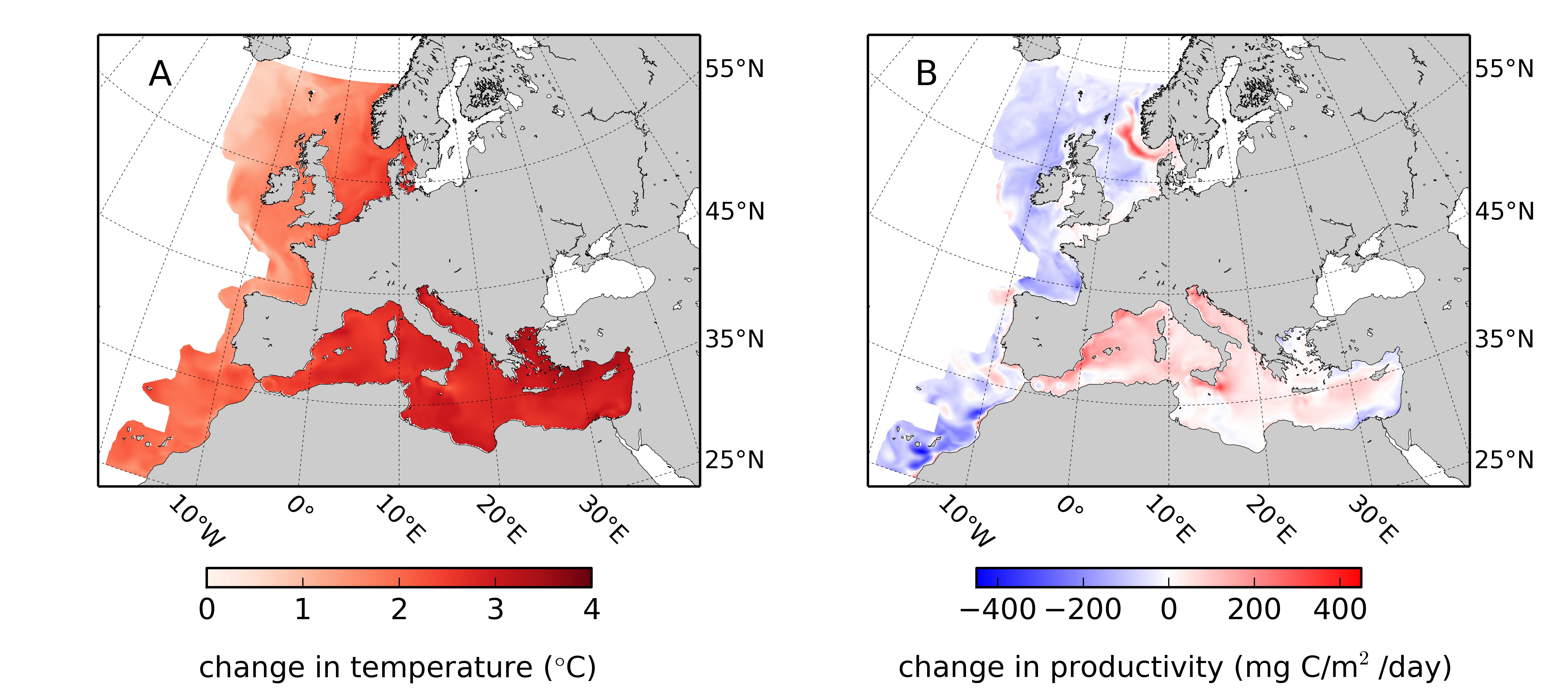
How a rise in temperatures could affect phytoplankton production in the NE Atlantic and the Mediterranean Sea by 2100, based on the IPCC high emissions scenario RCP 8.5. Image credit – CERES
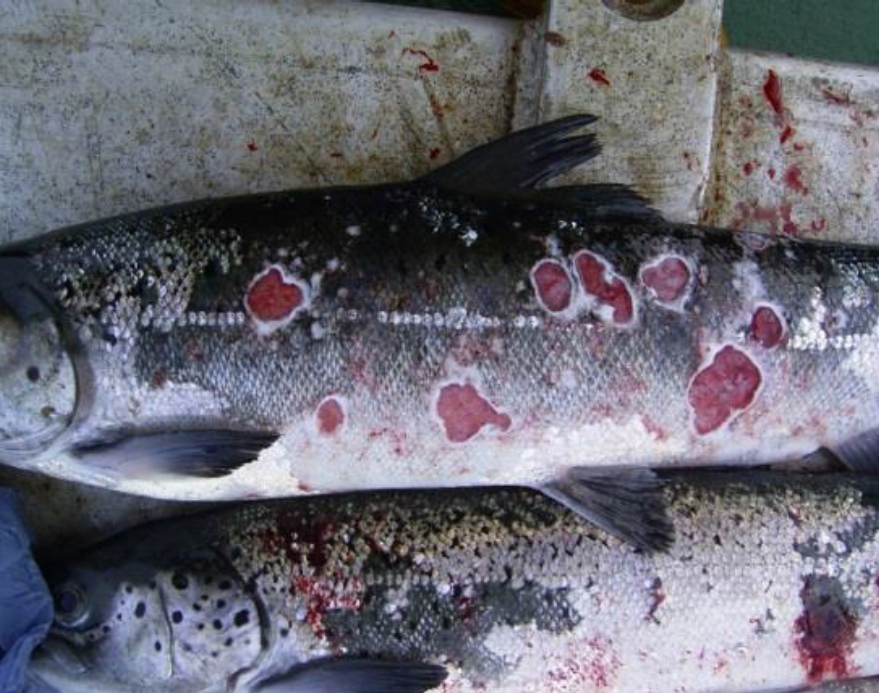
The effects of jellyfish stings on fish. Credit: Tom Doyle, UCC
Fish stock yield
What are the implications for fish stocks and their fisheries of climate-driven changes in ecosystem-level multi-species interactions and productivity?
Fishery behaviour
- What are the likely changes in fishery/fleet behaviour to changing fish stocks?
- How will interacting policy measures (e.g., discard ban, closed seasons and areas) influence fleet activities?
Winners and losers
- In specific regions, which historical or new species will emerge as potential winners and losers (biologically and economically) in the light of climate change?
- How can aquaculture and fisheries benefit from the emerging winners?
Mitigation and early warning
Which early warning techniques best protect against climate-driven increases during events such as harmful algal blooms, jellyfish outbreaks, the spread of pathogens or coastal hypoxia?
Policy and management
What policy changes can increase the scope and enhance the profits of fisheries and aquaculture in the short-, medium- and long-term? How can they do this while maintaining the health and productivity of marine and inland habitats in a future climate?
Who will benefit from CERES
The CERES species groups included over 50% of high-value fisheries and over 90% high-value aquaculture targets in European marine and inland waters. All industries dependent on these species groups can directly benefit from suggested solutions.
CERES works across:
Sectors
Marine fisheries, marine aquaculture, inland fisheries and inland aquaculture.
Economies
Demersal and pelagic fisheries, purse seine and longline, on-bottom and suspended cultures, sea cages and coastal ponds, semi-intensive and extensive farming in marine and inland waters.
Species
Top economic targets, e.g. small pelagics, gadoids, flatfishes, tuna, salmon, seabream, sea bass, mussels, oysters, clams, trout, carp as well as emerging species.
Regions
From high latitude oceans down to the Mediterranean and in European inland waters.
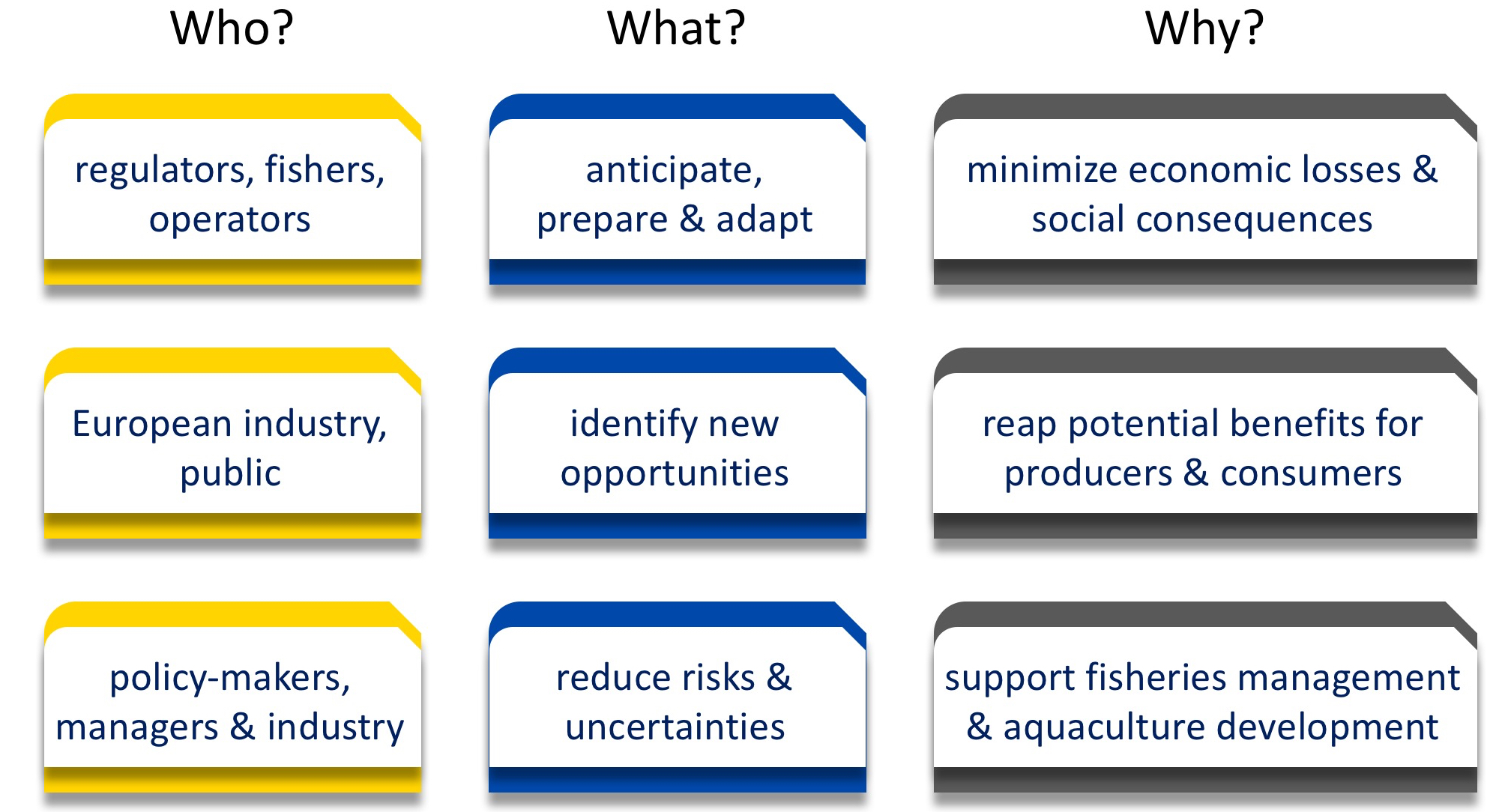
cIndustry
We collected contributions via workshops, focus groups, interviews and correspondence. If you want to get involved, or just be informed, please register to the CERES database.
Scenarios describing future society and economy
CERES used models to estimate economic developments in Europe’s fishery and aquaculture based on select, pre-defined physical and socio-economical future scenarios.
These future scenarios were specified by industry partners and stakeholders in the first year of CERES (e.g. fish prices, fuel prices, technological advancements, regional policy issues, etc.).
Real world data and road testing
Expertise of producers, farmers and fishermen and public administrators were integrated into CERES tools. For example, we improved our predictions by including fleet behaviour in regional fisheries models, or by using economic data in a ‘typical farm’ approach for regional aquaculture models.
We needed industry feedback on these tools during their development and to evaluate their results at the middle and final stage of the project. This feedback made our outputs more relevant for these Blue Growth sectors.
Risk and solution mapping and mitigation options
CERES used a mind-mapping exercise which let industry pinpoint how climate change might impact on their sector and what mitigation measures could be taken.
Based on the input of involved businesses, generic ‘bow-tie’ diagrams were adapted to sector, economy, region and species. Then risks and opportunities were quantified using Bayesian Belief Networks.
Industry perceptions of mitigation options also played a role in the calculation of adaptive capacity and vulnerability of each sector.
Get involved in CERES – get deeper insights:
Funding
![]() This project receives funding from the European Union’s Horizon 2020 research and innovation programme under grant agreement No 678193 (CERES, Climate Change and European Aquatic Resources). The content of this website does not reflect the official opinion of the European Union. Responsibility for the information and views expressed therein lies entirely with the author(s).
This project receives funding from the European Union’s Horizon 2020 research and innovation programme under grant agreement No 678193 (CERES, Climate Change and European Aquatic Resources). The content of this website does not reflect the official opinion of the European Union. Responsibility for the information and views expressed therein lies entirely with the author(s).
March 2016 – February 2020 I 5.6 Mio Euros .
Contact
CERES Office Universität Hamburg, Germany
Professor Dr. Myron Peck, scientific coordinator
Anastasia Walter, project manager
Phone +49 40 42838 9891
Email contact@ceresproject.eu
Twitter @ceresproject_eu
